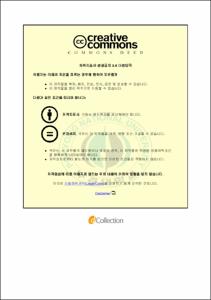Al-Mg-Si 계 주조합금에서 CoNi상의 첨가가 고온특성 및 마모 특성에 미치는 영향
- Alternative Title
- Effect of the addition of CoNi-phase on the high temperature and wear properties of Al-Mg-Si alloy
- Abstract
- Light alloys are widely applied for the automotive industry. Aluminum alloy is used as engine pistons and cylinder heads. Thus, improved wear properties and high temperature stability are required for the Al-Mg-Si alloy. In the present work, the Al-Mg-Si alloys with the addition of CoNi intermetallic powder have been fabricated in order to improve the resistance of wear and high temperature stability. Therefore, this work is to study the dry sliding wear behavior and high temperature properties of the Al-Mg-Si-CoNi alloy, A6061 alloy and A356 alloy. The wear test was carried out under the condition of the frequency of 4Hz and the load range of 50-300N. On the basis of observation and analysis on the worn surface and wear debris, the wear mechanism acting on each load was indentified. Under the low loading condition, oxidative wear was the main wear mechanism while the wear is controlled mainly by delamination and adhesive wear at high loads. Mechanical mixed layer(MML) was formed on the worn surface of the specimen tested under high applied load and crack was formed on MML. The wear resistance of the Al-Mg-Si-CoNi alloy are better than those of A6061 alloy and A356 alloy. The tensile test was carried out at the temperature range from 20℃ to 250℃. The Al-Mg-Si-CoNi alloy has higher tensile strength values than the A6061 alloy and A356 alloy at the all test temperature range. The high temperature stability was tested by measuring of hardness after heat treatment range from 200℃ to 300℃ for ten days with Al-Mg-Si-CoNi alloy. The hardness after heat treatment of 250℃ and 300℃ was sharply decreased after 1 day while after heat treatment at the temperature of 200℃ maintained their hardness up to 10 days. The Al-Mg-Si-CoNi alloy exhibited good thermal stability at 200℃. After heat treatment of the Al-Mg-Si-CoNi alloy, the stable crystalline Al5Co2 and Al3Ni phases were identified.
- Issued Date
- 2011
- Awarded Date
- 2011. 2
- Type
- Dissertation
- Publisher
- 부경대학교
- Alternative Author(s)
- Kim, Hwa Jung
- Affiliation
- 부경대학교 대학원
- Department
- 대학원 재료공학과
- Advisor
- 안용식
- Table Of Contents
- 1. 서론 ........................................................................................... P. 1
2. 이론적 배경 ............................................................................... P. 3
2.1 Al-Mg-Si 계 알루미늄 합금(6xxx 계 합금) ................................... P. 3
2.2 알루미늄 합금의 주요 강화기구 ....................................................... P. 3
2.2.1 고용강화 ...................................................................................... P. 3
2.2.2 석출강화 ...................................................................................... P. 4
2.2.3 분산강화 ...................................................................................... P. 6
2.3 마찰계수 ........................................................................................... P. 7
2.4 마멸의 개념 및 관련 이론 ............................................................... P. 7
2.4.1 응착 마멸 이론 ............................................................................ P. 8
2.4.2 층분리 마멸 이론 ........................................................................ P. 9
2.4.3 연삭 마멸 .................................................................................. P. 11
3. 실험 방법 ................................................................................ P. 12
3.1 시편제작 ......................................................................................... P. 12
3.2 미세조직 관찰 ................................................................................ P. 12
3.3 열처리 및 경도 측정 ...................................................................... P. 12
3.4 마멸 시험 ....................................................................................... P. 12
3.5 인장 시험 ....................................................................................... P. 16
3.6 고온 안정성 시험 ........................................................................... P. 16
4. 실험 결과 ................................................................................ P. 17
4.1 미세조직 ......................................................................................... P. 17
4.2 시효경화 곡선 ................................................................................ P. 17
4.3 마멸 시험 ....................................................................................... P. 23
4.3.1 마멸 특성 .................................................................................. P. 23
4.3.2 마멸면 관찰 ............................................................................... P. 23
4.3.3 마멸단면 관찰 ........................................................................... P. 23
4.3.4 마멸파편 관찰 ........................................................................... P. 24
4.4 고온 물성 실험 .............................................................................. P. 35
4.4.1 인장 시험 .................................................................................. P. 35
4.4.2 파단면 관찰 ............................................................................... P. 35
4.4.3 고온 안정성 시험 ...................................................................... P. 38
5. 고찰 ........................................................................................ P. 43
5.1 마멸 특성 ....................................................................................... P. 43
5.2 고온 특성 ....................................................................................... P. 44
6. 결론 ........................................................................................ P. 45
7. 참고문헌 ................................................................................. P. 47
- Degree
- Master
- Files in This Item:
-
-
Download
 Al-Mg-Si 계 주조합금에서 CoNi상의 첨가가 고온특성 및 마모 특성에 미치는 영향.pdf
기타 데이터 / 1.42 MB / Adobe PDF
Al-Mg-Si 계 주조합금에서 CoNi상의 첨가가 고온특성 및 마모 특성에 미치는 영향.pdf
기타 데이터 / 1.42 MB / Adobe PDF
-
Items in Repository are protected by copyright, with all rights reserved, unless otherwise indicated.